MARKET OVERVIEW
The global airbag control unit market is an important automotive safety industry sector whose stimulation is derived from the ongoing technological growth in vehicle safety. Given the intense competition among automakers to improve levels of passenger protection, a considerable amount of interest is now being directed toward airbag systems. The heart of airbag systems is, of course, the airbag control unit, a sophisticated electronic module that decides the exact moment for airbag deployment. While impact detection has been the driving trigger for traditional airbags, it is predicted that the future will see advanced deployments with predictive sensing capabilities.
These systems-these next-generation AI systems-will acquire real-time data while assessing collision risks even before the impact occurs. Setting a paradigm shift to smarter safety in an active way will save lives and limit injury very effectively. Also, working together with other safety systems, namely those pertaining to advanced driver assistance systems, will give a synchronized action for the airbags: on the same accord as seatbelt deployment, braking and vehicle stability controls.
On a different note, another aspect that will augment the Global Airbag Control Unit market is regulation hereby given to safety mandates by various governments worldwide. The implementing of stringent crash test standards, together with consumer awareness programs, will drive automakers to adopt new safety technologies in order to be compliant with ever-changing safety regulations. Different regions have adopted laws mandating the application of enhanced passive safety features, ensuring that manufacturers invest in airbag technologies which meet or even exceed such standards. This framework will benefit the further exploration into R&D regarding airbag deployment algorithms, sensor efficiencies, and impact assessment models.
Airbag control units, extending beyond passenger vehicles, are rumored to harvest across commercial fleets, motorcycles, and public transportation. While airbag systems have long been popular in traditional automobile concepts, they remain relatively undeveloped in motorcycles. Now, with the technological developments in the area of wearables with airbags and safety mechanisms mounted on the motorcycle, the applications for control units for two-wheelers are likely to grow. In the same vein, safety measures based on airbags are likely to find adoption in public transport in the way of buses and trains for safeguarding passengers from unforeseen events.
Invention and miniaturization of the components will also be contributing to the future of the Global Airbag Control Unit market. Styrofoam lightness and high durability may be utilized without compromising structural strength for the vehicle. Sensor accuracy will allow both an early detection of a crash event and its instant response through the deployment of the airbag within milliseconds from its impact sensing-in a matter of underline-how ever rather short-airbag initiation time. Furthermore, companies will prefer green alternatives concerning propellants and inflators to bring down the environmental dangers with the airbag deployments, thus contributing to the larger sustainability aims of the automotive industry with a push on safety and eco-sensibility.
As the market progresses with airbag control systems, cooperation between automotive manufacturers and suppliers of chips and software is becoming ever more important. These shared approaches, meshing safety engineering and digital technology, will blossom into advanced algorithms for real-time analysis of driver behavior, road conditions, and vehicle dynamics. Insight from this data will allow airbag systems to adjust depending on different crash situations, thereby optimizing the protection of the occupants over varying vectors and severities on impact.
Innovations, regulations, and the greater need for safer transportation will bring about drastic changes to the future of the Global Airbag Control Unit market. With advancing automotive technology, the evolution of airbag control systems will forever remain pivotal in ensuring that cars provide the utmost occupant protection possible.
Global Airbag Control Unit market is estimated to reach $13,340.52 Million by 2032; growing at a CAGR of 5.7% from 2025 to 2032.
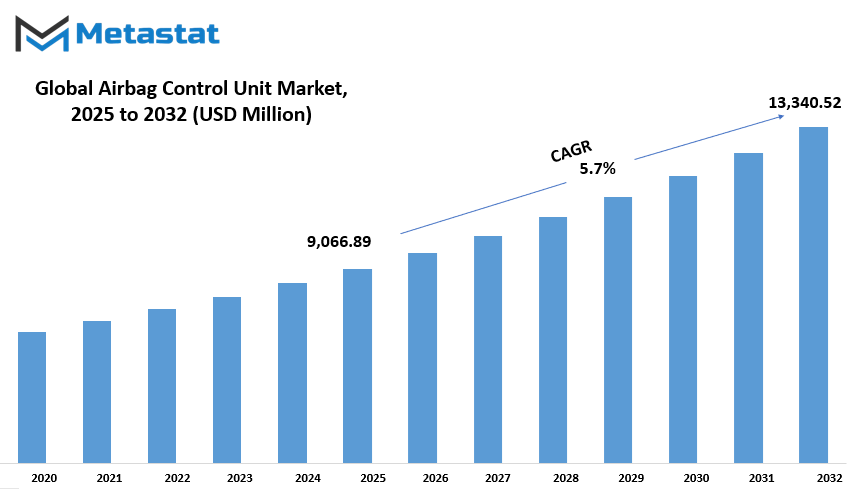
GROWTH FACTORS
The Global Airbag Control Unit market is experiencing a steady growth rate, which has been stimulated by increasing attention toward vehicle safety regulations and mandatory installation of airbags in vehicles. Governments worldwide have laid down stringent additional safety norms for automakers to incorporate advanced airbag systems in vehicles so as to minimize loss of life and in-jury- accidents. This has led to a demand for airbag control units, acting as the central component in ensuring the timely and correct deployment of airbags. Meanwhile, safety remains at the forefront of both regulatory bodies and consumers, and therefore, automakers are even investing in novel airbag technologies that enhance protection for passengers.
Another major factor driving great market growth is the increasing demand for advanced driver assistance systems (ADAS). This is the airbag control unit intending to evolve in an integrated environment of the ADAS, which are smart systems including collision detection, lane departure warnings systems, and automatic braking. These systems are intended to work in conjunction with airbag modules to achieve greater safety. Consumers are becoming more aware of vehicle safety, and a further drive in making airbag deployment accurate is being effected through the efforts of manufacturers together with sensor technology and artificial intelligence.
Even with the rise in acceptance of airbag control units, certain constraints might limit market growth. Chief among them is the high development and integration costs of new safety systems. Advanced airbag control units require sophisticated sensors, processors, and software that can significantly drive up manufacturing costs. Such costs would normally be passed onto the consumer, making vehicles with advanced airbag systems more expensive. This may cause some delay in the adoption of such systems, particularly in price-sensitive markets. Moreover, failures in sensors and electronic components bring reliability issues that may damage some confidence of the consumers in these safety features. An improperly functioning airbag control unit can lead to situations of incorrect deployment or non-deployment altogether, which puts big questions over safety.
The upside, however, is that artificial intelligence and IoT advancements are stimulating new opportunities in the market. AI-based crash detection systems are enhancing impact assessment accuracy by deploying airbags based on real-time information feedback. Meanwhile, IoT connectivity allows vehicle systems to communicate with each other for higher safety performance. These advancements are assisting in passenger protection and the evolutionary birth of next-generation smart vehicles. The consistent trend of research and innovation will offer a sustained airbag control unit market growth and contribute to a safer and more reliable market for the consumers worldwide.
MARKET SEGMENTATION
By Product Type
The Global Airbag Control Unit Market is anticipated to undergo a growth spurt with the growing focus on vehicle safety. As road accidents become more frequent, the government and regulatory bodies impose strict legislation mandating the installation of airbags in vehicles. With the rising awareness and regime support, the demand for airbag control systems is increasing because of the units' significant contribution toward effective airbag deployment in the event of a collision. Manufacturers have been continuously working on the efficiency and response time of these units to protect the passengers more effectively.
The market is segmented on the basis of product type, with Frontal Airbag Control Units valued at around $4,464.08 million; Curtain Airbag Control Units; Side Airbag Control Units; Knee Airbag Control Units; Pedestrian Airbag Control Units; Rear Airbag Control Units; and Center Airbag Control Units. Each type is purchased for a specified purpose of occupant safety against different impact modes. With the maturing of automotive safety technology, the integration of advanced sensors and artificial intelligence increasingly improves the accuracy and timing of airbag deployment. Factory investments into projects that further R&D for advancing systems capable of accurately predicting accidents with the aim to assist in the avoidance of possible severe injuries are on the rise.
The rise of electric and autonomous vehicles has also spurred an increase in demand for airbag control units. These vehicles need specialized safety equipment catering to new structural designs and operational dynamics. The focus now is not only on passenger safety; with the invention of pedestrian airbag control units, this new trend also pushes innovations for pedestrian safety. Additionally, the luxury car segment has grown significantly, further propelling the market as consumers are more inclined toward comfort and safety features.
The only downside would be the very high pricing of advanced airbag systems and the subsequent challenge of integrating them into contemporary vehicle architectures. Therefore, compatibility with the evolving automotive technologies is still a concern for the manufacturers. However, advancements in crash detection system technologies and the compliance with regulations are expected to continue pushing the growth of the market. As technology keeps innovating, airbag control units will become tailored with increasing protection and reliability within the several segments of vehicles.
By Vehicle Type
As per the current scenario, the Global Airbag Control Unit market has been garnering much attention due to automotive safety being one of the prime considerations of an automobile manufacturer towards an authority. This market forms a basic source for all advanced safety features in the front toward passenger protection in various vehicle categories. Growths are being noted in the demand for airbag control units as governments are tightening the noose over safety regulations, pressing manufacturers into highly advanced airbag systems in both passenger and commercial segments.
Vehicle classification has a great deal of impact on the airbag control unit market since airbag systems have to really adapt to the various structures of vehicles based on their safety requirements. Of all passenger vehicles, which are indeed the most used mode of transport, most shares would come from those with installed airbag control units. Road safety will remain the priority for businesses and fleet operators, which guarantees the contribution of light commercial vehicles to growth in this market from safety measures. Meanwhile, Medium and Heavy Commercial Vehicles (M&HCVs)-logistics and transportation purposes-are slowly being included with airbags, especially in those regions that practice stricter road safety regulations.
Another major chunk now in this market concerns electric and hybrid vehicles as the trend toward sustainable mobility grows, wherein OEMs for electric and hybrid vehicles emphasize highly advanced safety systems as they tend to gain market traction via compliancy with evolving safety regulations. Such types of vehicles make necessary specialized airbag control units, which are in line with the distinctive structural and operational traits of these vehicles.
The Sports Utility Vehicles (SUVs) are yet another segment that continues experiencing high customer demand due to the preference for bigger and stronger vehicles. Adding more advanced airbags to these vehicles will make them even more desirable in terms of safety. While motorcycles are a relatively small segment in the airbag control unit market, they are expected to be exciting in the future due to improvements in technology for improving rider safety. There will be airbag-equipped jackets and motorcycle-mounted airbags, which will slowly build this small yet developing segment.
As the automotive industry continues to grow, manufacturers and technology providers are working towards refining the airbag control unit to improve its responsiveness and reliability. Current ongoing research is focused on building better capabilities for crash detection leading to faster deployment and a reduced chance of failure. Integration of artificial intelligence and sensor-based systems soon will take airbag performance to a new level, potentially improving road safety in general.
The Global Airbag Control Unit market will continue to grow as consumers become aware and regulatory support mounts. This will increase the advanced airbag investments in sophisticated airbag systems by automakers which will become part and parcel of every aspect in the designs of vehicles across the board.
By Technology
As has been the case earlier, the Global Airbag Control Unit market will be developed continuously keeping in view the automotive safety norms being subscribed to by manufacturers and regulatory bodies worldwide for safety. Airbag control units serve the important purpose of detecting a collision and deploying airbags for minimizing injuries to passengers through timely deployment. Stringent regulatory and legal changes in vehicle safety standards and growing consumer awareness-respectively, give rise to the customer demand for advanced airbag control units. By incorporating advanced technologies, automobile manufacturers can improve the accuracy of crash detection and reduce the likelihood of injuries due to accidents.
The above divisions include categories where each type of airbag control unit was developed specifically for certain uses by different types of technologies. Conventional airbag control units serve as the majority and the basic types of modern safety systems. Smart airbag control units can deploy airbags, depending on the severity of the crash and passenger positioning, using integrated sensors and algorithms. Adaptive airbag control goes a step ahead in safety and analyzes real-time data to optimize deployment force, thus making it more appropriate for occupants with different sizes and seating positions.
Multistage airbag control units will further improve safety by using deployment of airbags in multiple stages based on the intensity of the impact, thus reducing risk and prevention of unnecessary force. Networked airbag control units improve the response time, as they communicate with other vehicle safety systems to offer a more synchronized protective mechanism. Wireless airbag control units eliminate wiring and integrate well with modern vehicle architectures. Integrated airbag control units create several safety functions into a single system offering more efficient and better optimized vehicle safety management.
Airbag control technology development is evolving and has increased technological innovations in the industry. Major automakers and vehicle suppliers are investing heavily in research and development to come up with smarter technology systems that are not only faster but more efficient and effective to use. With the automotive industry slowly moving to a connected and autonomous future, airbag control units have to evolve in such a way that they could work together with other safe features to provide a more holistic approach to the future of safety. Generally, multiple countries employ strict crash test requirements before the certain product can be introduced into their markets; these market protects influence their existence with their national safety regulations.
The role of airbag control units will further keep on increasing with the advancement of technology in vehicles. Their response intelligently to crash scenarios will shape their interfacing capability with other safety features. Sensor technology improvement, data processing improvement, and connectivity improvements will also result in keeping airbag control units as an important component in saving lives from road accidents.
By Sales Channel
The Global Airbag Control Unit market is fundamental to automotive safety by ensuring rapid response in collisions to mitigate injuries. With the growing incorporation of advanced safety features by vehicles, the demand for airbag control units is anticipated to increase. They are important components of any modern automobile since they act to detect a crash and deploy the airbags at the right time. The ecosystem of the airbag control unit market is established on different sales channels that target specific customer requirements and distribution strategies.
The OEMs are a key segment supplying airbag control units directly to automobile manufacturers for installation in new vehicles. Automakers cannot compromise on the safety of their vehicles or compliance with regulatory standards, and therefore they depend on OEMs for quality inputs that meet the prevailing standards in the industry. As new automotive companies keep coming up with models bearing advanced safety features, the demand for reliable airbag control units supplied by OEMs will keep growing.
The aftermarket segment serves customers in search of replacement airbag control units. These components are usually in such demand by vehicle owners, repair shops, and service centers for maintenance purposes, accidental deployment, or performance upgrades. The burgeoning number of vehicles in operation ensures that the aftermarket sector remains crucial in keeping older vehicles with safety features.
Distributors are essential intermediaries between manufacturers and retailers, allowing for the supply of airbag control units across the various regions. It is here where distributors manage bulk orders and the logistics of distribution flows between production and the end users. Retailers, on the other hand, target the end consumers who require airbag control units compatible with concrete vehicle models. Be it through their own retail shops or dedicated automotive service centers, retailers provide access to these components for the vehicle owners.
Online selling is on the rise now with its merits. E-commerce platforms boast about product descriptions, compatibility guides, and customer reviews to enable buyers to make rational decisions. With digital platforms going wide, consumers can now quickly compare the different brands and specifications before making a call on airbag control units.
Wholesalers opt for bulk sales and large quantities to companies like auto repair chains, fleet operators, and dealerships. In this way, they allow an economic way of procuring for all those companies that need multiple units at a time. Furthermore, direct sales from manufacturers to end users, including fleet operators or government agencies in bulk, allow even more streamlined procurement by cutting out middlemen. As the automotive sector focuses on safety and innovation, a sustained growth of the Global Airbag Control Unit market is to be expected along these sales channels.
|
Forecast Period |
2025-2032 |
|
Market Size in 2025 |
$9,066.89 million |
|
Market Size by 2032 |
$13,340.52 Million |
|
Growth Rate from 2025 to 2032 |
5.7% |
|
Base Year |
2025 |
|
Regions Covered |
North America, Europe, Asia-Pacific, South America, Middle East & Africa |
REGIONAL ANALYSIS
The Global Airbag Control Unit market is divided into segments aimed at regions - North America, Europe, Asia-Pacific, South America, and the Middle East & Africa. It can further be partitioned into separate gatherings for much clearer understanding of the market distribution across regions. North America counts the US, Canada, and Mexico; such a market holds strong, owing to the top manufacturers of automobiles and stringent regulations regarding airbag safety within vehicles. Europe comprises the following countries- UK, Germany, France, Italy, and the Rest of Europe. Well, since it has a strong automotive industry and buoying trends in awareness about safety in vehicles, that further helps the expansion of the market.
Asia-Pacific is a rising region with a sound market rate, with key contributors like India, China, Japan, and South Korea being the most rapidly growing nations in terms of demand. This is mainly because of the higher production and sales of cars as well as enhanced vehicle safety standards through efficient legislation. It boosts the Asia Pacific area as the remainder of the developing economies is put into making safety features into their vehicles. South America comprises Brazil, Argentina, and the Rest of South America. Compared to North America and Europe, the region remains relatively small, but vehicle ownership is rising coupled with changing safety regulations, thus most probably increasing demand.
Middle East & Africa comprises GCC Countries, Egypt, South Africa, and Rest of Middle East & Africa. High sales of luxury and premium vehicles in these countries provide an impetus to growth in the market. The booming automotive industry in South Africa also fosters growth. Further, with the stringent safety regulations across many countries, demand is expected to grow in the future for airbag control units. Market dynamics across these regions are governed by government policies, technological advancements, and increased customer safety focus.
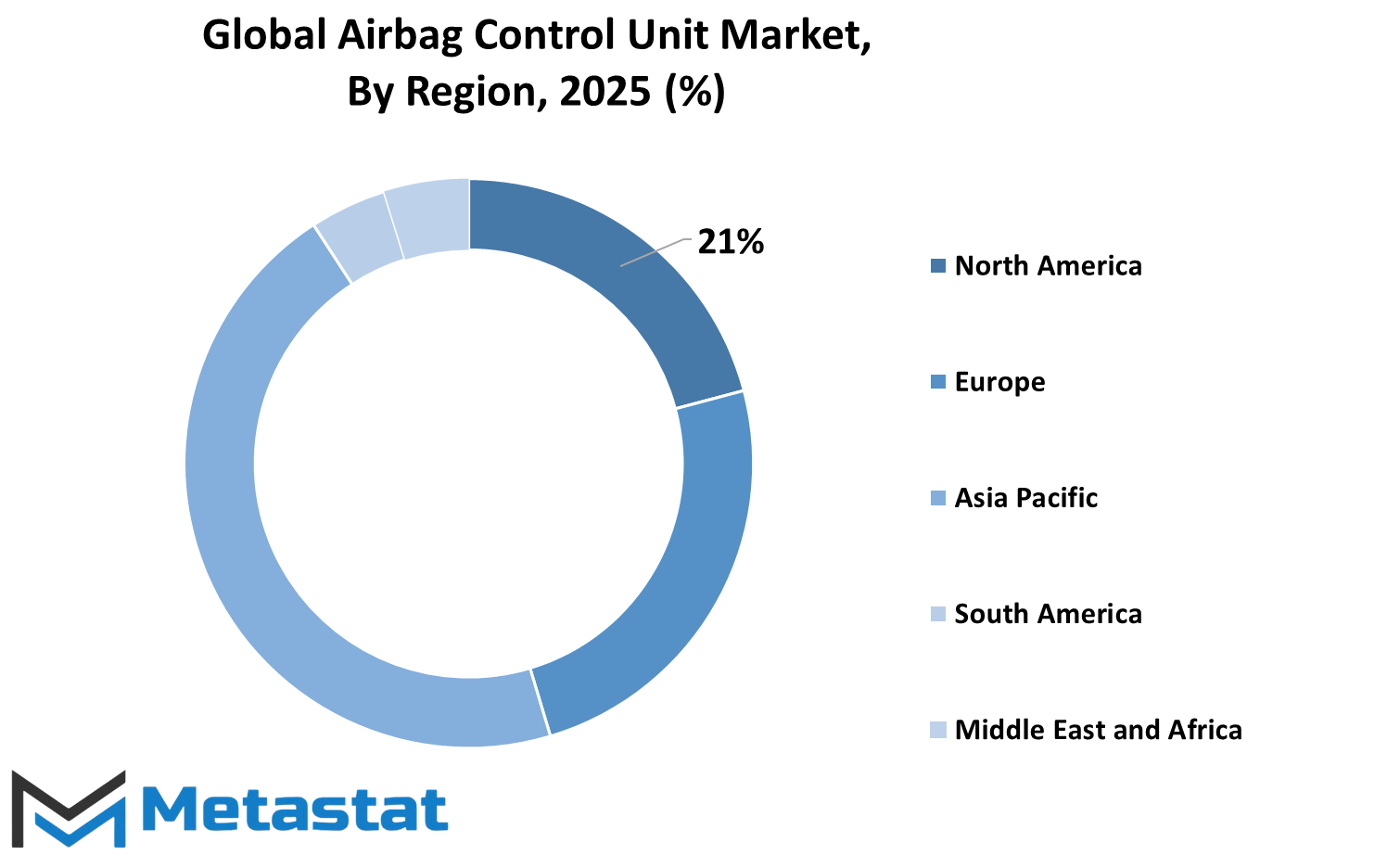
COMPETITIVE PLAYERS
The Global Airbag Control Unit Market is vital for vehicle safety systems, with manufacturers continuously evolving their technologies to improve protection and reliability. As safety regulations become tighter and general awareness about road safety increases, the demand for effective airbag systems is projected to increase. The airbag control unit is a pivotal component which detects collision impact and accordingly initiates the needed responses to protect passengers. In this respect, technology has improved drastically; modern systems combine sensors, software, and electronics for fast and precise deployment.
As developments in the automobile industry become rapid, so have airbag control units keeping pace with these advancements. Earlier, airbags were treated as an additional safety element, but presently they are fundamental to vehicle design. Greater attention being paid toward reducing road fatalities has seen advanced airbag systems incorporated in passenger and commercial vehicles alike. Governments across nations are enforcing stricter safety norms that compel automobile manufacturers to develop more sophisticated safety systems. Airbag control units are being made with great consideration to enhanced crash detection, speed of response, and multi-stage deployment systems.
One of the most significant changes in the airbag systems is the electronic component application, improving accuracy and system efficiency. Today these systems apply complex algorithms and real-time data processing to estimate the effect of impact severity. Precise identification is made possible through the use of sensors and accelerometers, ensuring deployment only when absolutely essential. Furthermore, advancements in vehicle connectivity and artificial intelligence are paving the way for the development of more intelligent airbag control units that can amend themselves for various collision scenarios. Such improvements will not only enhance safety levels but also minimize the chances of activation for non-genuine cases, therefore preventing injury.
Major companies are sustaining the Global Airbag Control Unit market's growth, with Autoliv Inc., Robert Bosch GmbH, Denso Corporation, ZF Friedrichshafen AG, Continental AG, Hyundai Mobis, Toyoda Gosei Co., Ltd., Nihon Plast Co., Ltd., SEAT, S.A.U, TRW Automotive Holdings Corp., Aptiv PLC, and NXP Semiconductors N.V., who are investing in research and development for innovational technologies in safety, reliability, and cost efficiency. Increased competition among manufacturers is making way for the introduction of novel designs and materials, making airbag systems safer and more efficient.
The airbag control unit will undergo further metamorphosis with the automobile industry being pushed toward autonomous and electric vehicles. Further integration of these units with advanced driver assistance systems will add to the overall vehicle safety.
Airbag Control Unit Market Key Segments:
By Product Type
- Frontal Airbag Control Units
- Curtain Airbag Control Units
- Side Airbag Control Units
- Knee Airbag Control Units
- Pedestrian Airbag Control Units
- Rear Airbag Control Units
- Center Airbag Control Units
By Vehicle Type
- Passenger Cars
- Light Commercial Vehicles (LCVs)
- Medium and Heavy Commercial Vehicles (M&HCVs)
- Electric Vehicles
- Hybrid Vehicles
- Sports Utility Vehicles (SUVs)
- Motorcycles
By Technology
- Conventional Airbag Control Units
- Smart Airbag Control Units
- Adaptive Airbag Control Units
- Multistage Airbag Control Units
- Networked Airbag Control Units
- Wireless Airbag Control Units
- Integrated Airbag Control Units
By Sales Channel
- Original Equipment Manufacturers (OEMs)
- Aftermarket
- Distributors
- Retailers
- Online Sales
- Wholesalers
- Direct Sales
Key Global Airbag Control Unit Industry Players
- Autoliv Inc.
- Robert Bosch GmbH
- Denso Corporation
- ZF Friedrichshafen AG
- Continental AG
- Hyundai Mobis
- Toyoda Gosei Co., Ltd.
- Nihon Plast Co., Ltd.
- SEAT, S.A.U
- TRW Automotive Holdings Corp.
- Aptiv PLC
- NXP Semiconductors N.V.
WHAT REPORT PROVIDES
- Full in-depth analysis of the parent Industry
- Important changes in market and its dynamics
- Segmentation details of the market
- Former, on-going, and projected market analysis in terms of volume and value
- Assessment of niche industry developments
- Market share analysis
- Key strategies of major players
- Emerging segments and regional growth potential



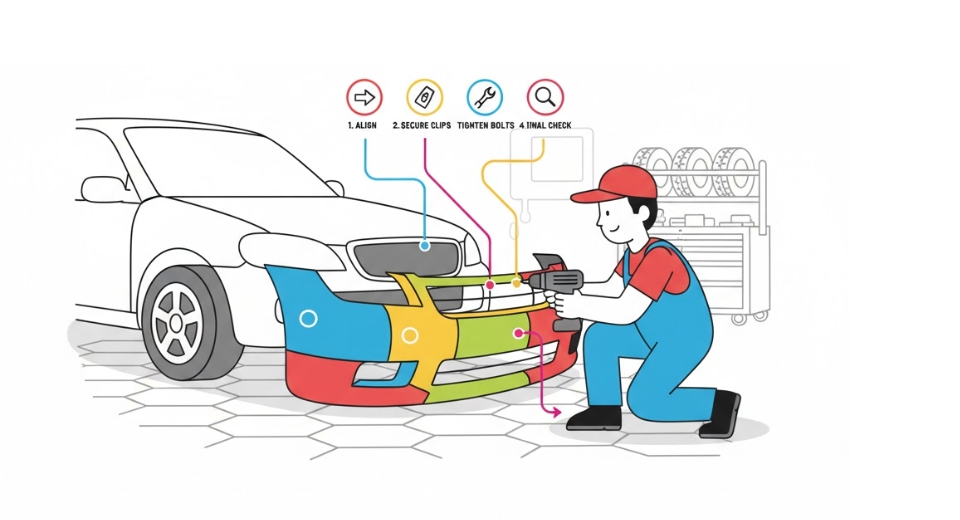
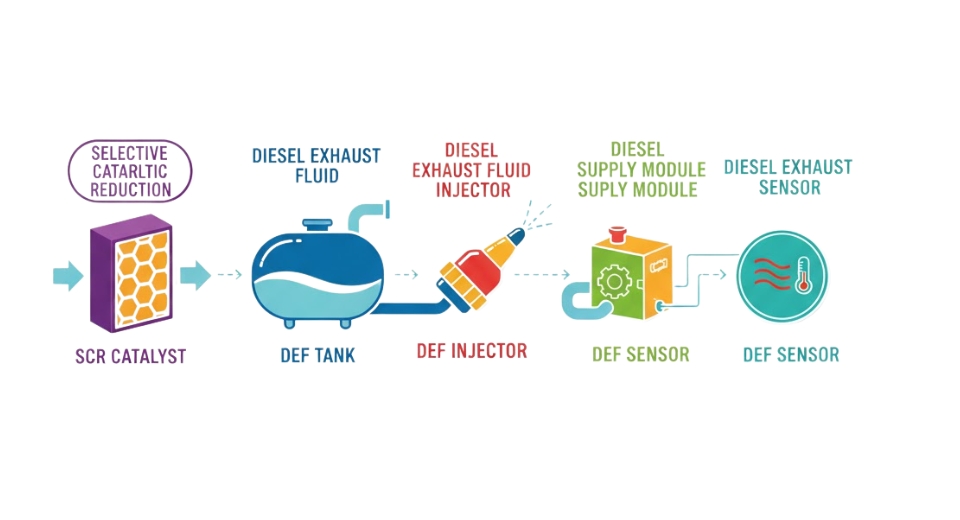
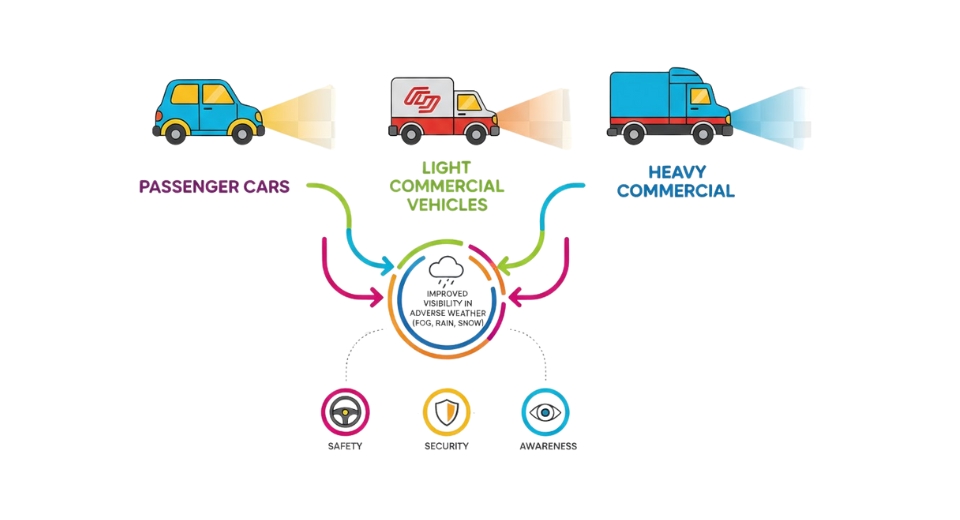


 US: +1 3023308252
US: +1 3023308252






